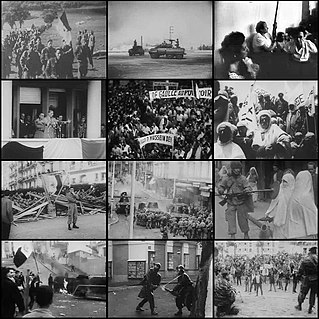 W
WThe Algerian War, also known as the Algerian Revolution or the Algerian War of Independence, and sometimes in Algeria as the War of 1 November, was fought between France and the Algerian National Liberation Front from 1954 to 1962, which led to Algeria winning its independence from France. An important decolonization war, it was a complex conflict characterized by guerrilla warfare and the use of torture. The conflict also became a civil war between the different communities and within the communities. The war took place mainly on the territory of Algeria, with repercussions in metropolitan France.
 W
WThe 99th Infantry Regiment was an infantry regiment of the French Army. It was originally formed in 1796 as the 24th Light Demi-Brigade, which was renamed the 44th Light Infantry Regiment and finally the 99th Infantry Regiment. It disbanded in 1997.
 W
WThe Algerian Communist Party was a communist party in Algeria. The PCA emerged in 1920 as an extension of the French Communist Party (PCF) and eventually became a separate entity in 1936. Despite this, it was recognized by the Comintern in 1935. Its first congress was in Algiers in July 1936, where it was the PCA's headquarter.
 W
WThe Algerian National Movement was an organization founded to counteract the efforts of the Front de Libération Nationale (FLN).
 W
WThe Algerian popular resistance against French invasion is the historic process that the Algerian people undertook to counter the invasion of French colonial troops on Algerian soil.
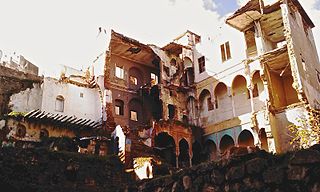 W
WThe Battle of Algiers was a campaign of urban guerrilla warfare carried out by the National Liberation Front (FLN) against the French Algerian authorities from late 1956 to late 1957. The conflict began as a series of attacks by the FLN against the French forces followed by a terrorist attack on Algerian civilians in Algiers by a group of Pieds-Noirs, aided by the police. Reprisals followed and the violence escalated leading the French Governor-General to deploy the French Army in Algiers to suppress the FLN. Civilian authorities left all prerogatives to General Jacques Massu who, operating outside legal frameworks between January and September 1957, successfully eliminated the FLN from Algiers. The use of torture, forced disappearances and illegal executions by the French later caused controversy in France.
 W
WThe Algiers putsch, also known as the Generals' putsch, was a failed coup d'état intended to force French President Charles de Gaulle not to abandon French Algeria, along with the resident European community and pro-French Muslims. Organised in French Algeria by retired French Army generals Maurice Challe, Edmond Jouhaud, André Zeller and Raoul Salan, it took place from the afternoon of 21 to 26 April 1961 in the midst of the Algerian War (1954–62).
 W
WThe Battle of Bab el Oued was a violent confrontation which occurred during the latter stages of the Algerian War (1954–1962) between the French Army and the Organisation armée secrète (OAS) which opposed Algerian independence. It took place in Bab El Oued, a traditionally white working-class quarter of Algiers, from 23 March to 6 April 1962.
 W
WThe Battle of Tachekkirt was a battle between the French forces of Marshall Randon and the Kabyle forces of Sherif Boubaghla.
 W
WThe battle of the borders, was a group of military operations initiated mainly on the Algeria-Tunisia border during the Algerian war, from 21 january to 28 may 1958, by the paratrooper units of the French army against the attacks, and bombardments of the Morice line by the combatants of the Armée de libération nationale (ALN), the military branch of the FLN, stationed in Tunisia.
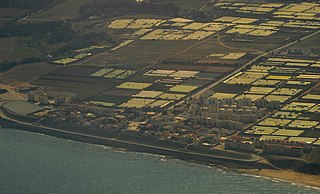 W
WThe First Battle of Boudouaou in May 1837, during the French conquest of Algeria, pitted the troupes coloniales under Colonel Maximilien Joseph Schauenburg against the troops of Kabylia of the Igawawen.
 W
WThe Camp de Rivesaltes, also known as Camp Maréchal Joffre, was a military camp in the commune of Rivesaltes nearby Perpignan in the department of Pyrénées-Orientales in the South of France. The camp was also used to detain civil populations several times between 1939 and 2007. Its darkest period was in 1942, when 2,251 Jews, including 110 children, were transferred from Rivesaltes via the Drancy internment camp to the Nazi extermination camp Auschwitz, where they were murdered.
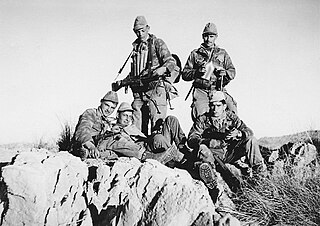 W
WThe Commandos de Chasse were a French Counterinsurgency Commando force raised for the Algerian war.
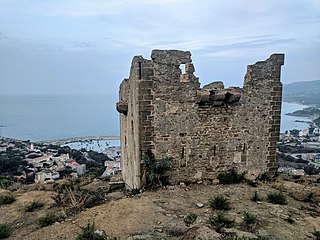 W
WThe First Assault of Dellys in May 1837, during the French conquest of Algeria, opposed the troupes coloniales under Corvette captain Félix-Ariel d'Assigny (1794-1846) to the resistance fighters of the town of Dellys in Kabylia of the Igawawen.
 W
WThe Second Assault of Dellys was an assault by troupes coloniales under General Thomas Robert Bugeaud (1784–1849) against the Algerian resistance fighters in the town of Dellys, Kabylia of the Igawawen. It was part of the French conquest of Algeria and took place in April–May 1844.
 W
WThe douk-douk is a French-made pocket knife of simple sheet-metal construction. It has been manufactured by the M. C. Cognet cutlery firm in Thiers, France, since 1929.
 W
WThe Emirate of Abdelkader, Resistance of Abd al-Qadir, or the Emirate of Mascara, was founded by Abdelkader al-Jazairi with the allegiance of the people of Algeria to resist the French conquest of Algeria with its first capital at Mascara.
 W
WThe Évian Accords comprise a peace treaty signed on 18 March 1962 in Évian-les-Bains, France, by France and the Provisional Government of the Algerian Republic, the government-in-exile of FLN, which sought Algeria's independence from France. The Accords ended the 1954–1962 Algerian War with a formal cease-fire proclaimed for 19 March and formalized the idea of a cooperative exchange between the two countries, as well as the full independence of Algeria from France.
 W
WThe Expedition of the Col des Beni Aïcha in May 1837, during the French conquest of Algeria, pitted the troupes coloniales under Colonel Maximilien Joseph Schauenburg against the troops of Beni Aïcha of the Igawawen.
 W
WThe Ferme Gautier is a torture center established during the Algerian war in the commune of Souk El Had in Kabylia within Algeria.
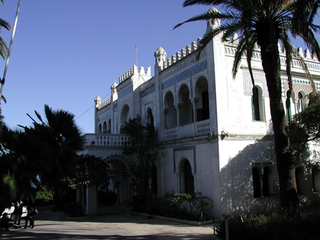 W
WThe villa Sésini is a torture center established in El Biar during the Algerian war in the city of Algiers.
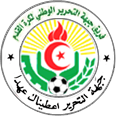 W
WThe FLN football team, also known as Le onze de l'indépendance was a team made up mainly of professional players in France, who then joined the Algerian independence movement of the National Liberation Front (FLN), and assisted in organizing football matches against national football teams. The FLN linked African football to anti-colonial resistance using the idea of Pan-Africanism as a legitimizing tool and symbol of national identity.
 W
WA referendum to approve the Évian Accords ending the Algerian War and granting self-determination to Algeria was held in France on 8 April 1962. It was approved by 90.8% of voters with a 75.3% turnout.
 W
WThe Front de l'Algérie française was a political and militant movement in favour of French Algeria, created in 1960 in Algiers. Its founder was Said Boualam.
 W
WGerboise Blanche was the codename of the second French nuclear test. It was conducted by the Nuclear Experiments Operational Group (GOEN), a unit of the Joint Special Weapons Command on 1 April 1960, at the Saharan Military Experiments Centre near Reggane, French Algeria in the Sahara desert region of Tanezrouft, during the Algerian War.
 W
WGerboise Bleue was the codename of the first French nuclear test. It was conducted by the Nuclear Experiments Operational Group (GOEN), a unit of the Joint Special Weapons Command on 13 February 1960, at the Saharan Military Experiments Centre near Reggane, French Algeria in the Sahara desert region of Tanezrouft, during the Algerian War. General Pierre Marie Gallois was instrumental in the endeavour, and earned the nickname of père de la bombe A.
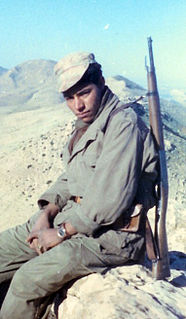 W
WHarki is the generic term for native Muslim Algerians who served as auxiliaries in the French Army during the Algerian War of Independence from 1954 to 1962. The word sometimes applies to all Algerian Muslims who supported French Algeria during the war. The motives for enlisting in the Harkis were mixed. They are regarded as traitors in Algeria and thousands were killed after the war in reprisals despite the Évian Accords ceasefire and amnesty stipulations.
 W
WThe In Ekker series was a group of 13 underground A-bomb nuclear tests and 5 bombs explosions for the Mirage IV conducted by France between November 1961 and February 1966. The bombs were detonated at the Oasis Military Experiments Centre near In Ekker, French Algeria at the Tan Afella in the Hoggar Mountains, by the Nuclear Experiments Operational Group (GOEN), a unit of the Joint Special Weapons Command. The series saw the explosion of the first AN-11/21 bombs and was followed by the 1966–70 series.
 W
WIndependence Day, observed annually on 5 July, is a National Holiday in Algeria commemorating colonial Algerian independence from France on 5 July 1962.
 W
WThe First Battle of the Issers in May 1837, during the French conquest of Algeria, pitted the troupes coloniales under General Perrégaux and Colonel Schauenburg against the troops of Kabylia of the Igawawen.
 W
WThe Morice Line was a defensive line that went into effect in September 1957 during the Algerian War. It was constructed by the French to prevent the rebel guerrillas of the Algerian National Liberation Front from entering Algeria, then a French colony, from two neighboring countries, Tunisia and Morocco. It was named after then French Minister of Defence André Morice.
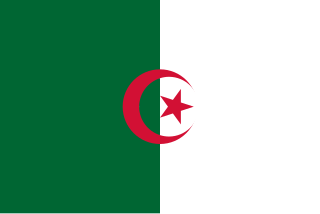 W
WThe National Liberation Army or ALN was the armed wing of the nationalist National Liberation Front of Algeria during the Algerian War. After Algeria won its independence from France in 1962, the ALN was converted into the regular Algerian People's National Armed Forces.
 W
WThe National Liberation Front is a nationalist political party in Algeria. It was the principal nationalist movement during the Algerian War and the sole legal and ruling political party of the Algerian state until other parties were legalised in 1989. The FLN was established in 1954 from a split in the Movement for the Triumph of Democratic Liberties from members of the Special Organisation paramilitary; its armed wing, the National Liberation Army, participated in the Algerian War from 1954 to 1962. After the Évian Accords of 1962, the party purged internal dissent and ruled Algeria as a one-party state. After the 1988 October Riots and the Algerian Civil War (1991–2002) against Islamist groups, the FLN was reelected to power in the 2002 Algerian legislative election, and has generally remained in power ever since, although sometimes needing to form coalitions with other parties.
 W
WOperation Véronique was an unsuccessful military operation undertaken by the French Military during the Algerian War, in hopes of eradicating the FLN.
 W
WThe Oran massacre of 1962 was the mass killing of Pied-Noir and European expatriates living in Algeria by members of the Algerian National Liberation Army. It took place in Oran beginning on the date of Algerian independence, and ended on July 7, 1962. Estimates of the casualties vary from a low of 95 to 365 deaths in a report by a group of historians sent to the French government in 2006, and has been a topic of speculation for right-wing elements.
 W
WOued Fodda is a town and commune in Chlef Province, Algeria. According to the 1998 census it has a population of 36,187.
 W
WThe Paris massacre of 1961 occurred on 17 October 1961, during the Algerian War (1954–62). Under orders from the head of the Parisian police, Maurice Papon, the French National Police attacked a demonstration by 30,000 pro-National Liberation Front (FLN) Algerians. After 37 years of denial and censorship of the press, in 1998 the French government finally acknowledged 40 deaths, although there are estimates of 100 to 300 victims. Death was due to heavy-handed beating by the police, as well as mass drownings, as police officers threw demonstrators into the river Seine.
 W
WThe Provisional Government of the Algerian Republic was the government-in-exile of the Algerian National Liberation Front (FLN) during the latter part of the Algerian War of Independence (1954–62).
 W
WLa Question is a book by Henri Alleg, published in 1958. It is famous for precisely describing the methods of torture used by French paratroopers during the Algerian War from the point of view of a victim. La Question was censored in France after selling 60,000 copies in two weeks.
 W
WThe Reggane series was a group of 4 atmospheric A-bomb nuclear tests conducted by France between February 1960 and April 1961, close to the end of the Algerian War. The bombs were detonated at the Saharan Military Experiments Centre near Reggane, French Algeria in the Sahara desert region of Tanezrouft, by the Nuclear Experiments Operational Group (GOEN), a unit of the Joint Special Weapons Command. The series saw the explosion of the first French nuclear weapon and was followed by the In Ekker series.
 W
WThe Raid on Reghaïa in May 1837, during the French conquest of Algeria, pitted the French colonizers in Reghaïa region against the Kabyle troops of the Igawawen confederacy.
The Sétif and Guelma massacre was a series of attacks by French colonial authorities and pied-noir settler militias on Algerian civilians in 1945 around the market town of Sétif, west of Constantine, in French Algeria. French police fired on demonstrators at a protest on 8 May 1945. Riots in the town were followed by attacks on French settlers (colons) in the surrounding countryside, resulting in 102 deaths. The French colonial authorities and European settlers retaliated by killing between 6,000 and 30,000 Muslims in the region. Both the outbreak and the indiscriminate nature of its retaliation marked a turning point in Franco-Algerian relations, leading to the Algerian War of 1954–1962.
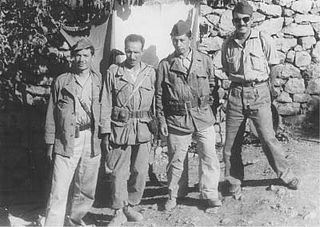 W
WThe Congress of Soummam was the founding act of the modern Algerian State, and a crucial element of success of the Algerian war for independence. It took place on 20 August 1956 when the FLN's leadership within Algeria met secretly in the Soummam valley to compose a common platform and create a new organizational structure.
 W
WAnnie Steiner was an Algerian activist of the National Liberation Front. She was arrested on 15 October 1956 and sentenced in March 1957 by the Algerian Armed Forces Tribunal to five years' imprisonment for helping the National Liberation Front, and imprisoned in Serkadji Prison. She was released in 1961.
 W
WThe Battle of the Col des Beni Aïcha (1846) or Battle of Thénia (1846), which broke out on 3 February 1846, was a battle of the French conquest of Algeria between the Algerian rebels, and the France, which was the colonial power in the region since 1830.
 W
WGermaine Tillion was a French ethnologist, best known for her work in Algeria in the 1950s on behalf of the French government. A member of the French resistance, she spent time in the Ravensbrück concentration camp.
 W
WWomen fulfilled a number of different functions during the Algerian War (1954–1962), Algeria's war for independence. The majority of Muslim women who became active participants did so on the side of the National Liberation Front (FLN). The French included some women, both Muslim and French, in their war effort, but they were not as fully integrated, nor were they charged with the same breadth of tasks as their Algerian sisters. The total number of women involved in the conflict, as determined by post-war veteran registration, is numbered at 11,000, but it is possible that this number was significantly higher due to underreporting.
 W
W W
W